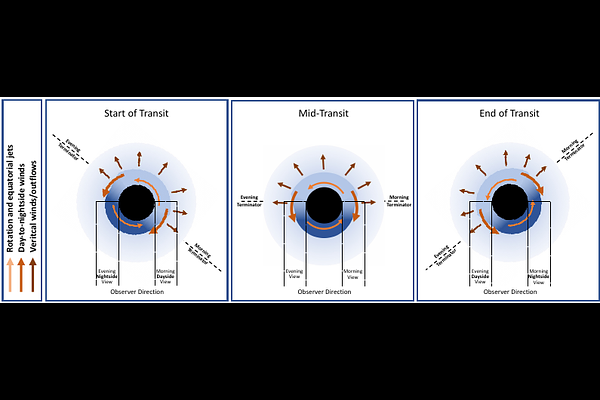Exoplanet atmospheres at high spectral resolution

Exoplanet atmospheres at high spectral resolution
Ignas Snellen
AbstractHigh-resolution spectroscopy (HRS) has grown into one of the main techniques to characterise the atmospheres of extrasolar planets. High spectral resolving power allows for the efficient removal of telluric and host-star contamination. Combined with the large collecting area of ground-based telescopes it enables detailed studies of atmospheric species, temperature structure, atmospheric loss, and global winds and circulation patterns. In this review, the wide range of HRS observation and data-analysis techniques are described and literature results discussed. Key findings include: * The highest irradiated planets show a rich spectrum of atomic and ionic species, just like stars. * Retrieval analyses of Hot Jupiters and directly imaged Super- Jupiters point to Solar metallicities and chemistry, but observed samples are still heterogeneous and incomplete. * There appears to be a clear dichotomy between Hot Jupiters with and without atmospheric inversions, depending on their equilibrium temperature. * Some highly irradiated planets exhibit enormous leading and/or trailing tails of helium gas, providing unique insights into planet evolution and atmospheric escape processes. * Minor isotopes of carbon and oxygen are now being detected in gas giant planets and brown dwarfs with the interesting potential to shed light on formation pathways. A list of potential pitfalls is provided for those new to the field, and synergies with JWST are discussed. HRS has a great future ahead with the advent of the extremely large telescopes, promising to bring temperate rocky exoplanets into view with their increase in HRS detection speed of up to three orders of magnitude.